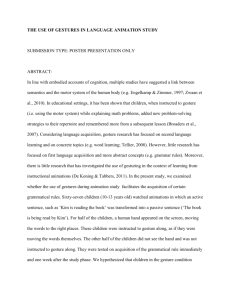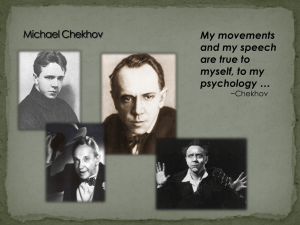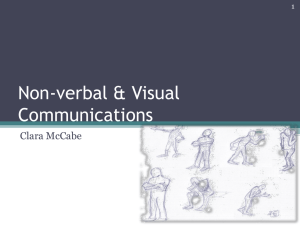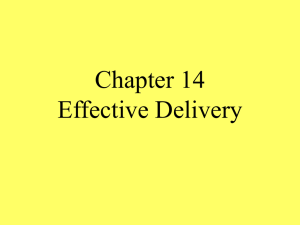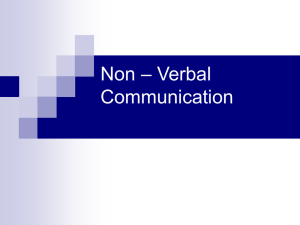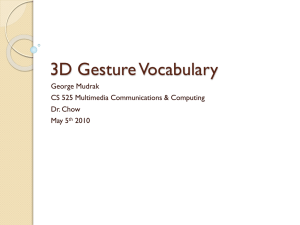The International Research Foundation
advertisement
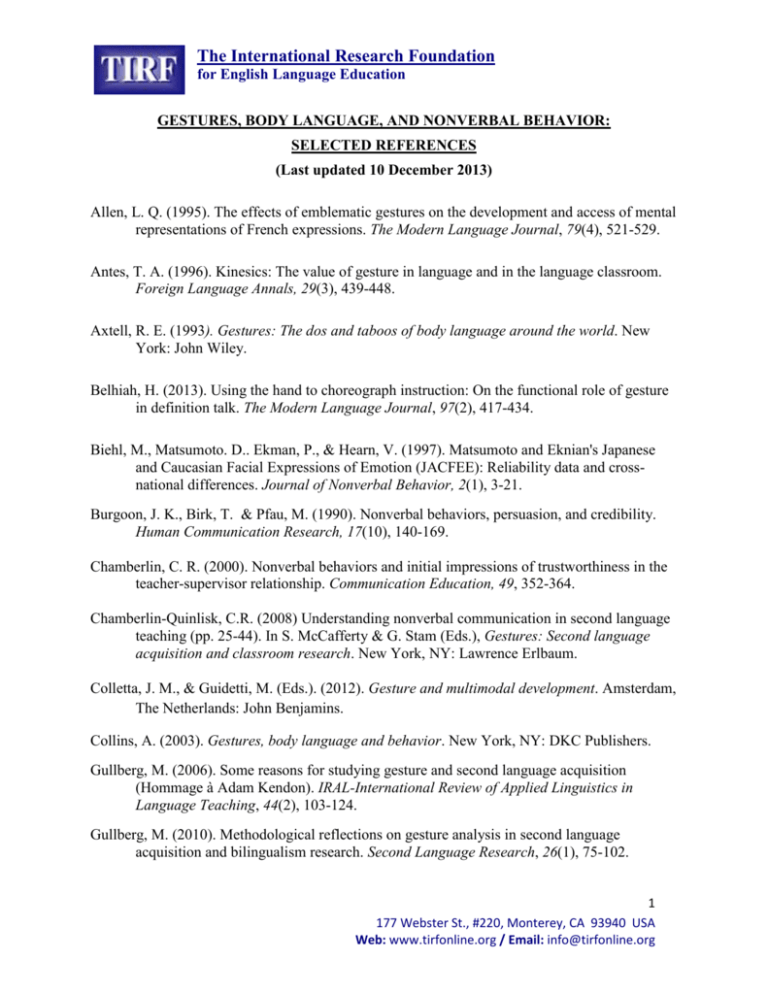
The International Research Foundation for English Language Education GESTURES, BODY LANGUAGE, AND NONVERBAL BEHAVIOR: SELECTED REFERENCES (Last updated 10 December 2013) Allen, L. Q. (1995). The effects of emblematic gestures on the development and access of mental representations of French expressions. The Modern Language Journal, 79(4), 521-529. Antes, T. A. (1996). Kinesics: The value of gesture in language and in the language classroom. Foreign Language Annals, 29(3), 439-448. Axtell, R. E. (1993). Gestures: The dos and taboos of body language around the world. New York: John Wiley. Belhiah, H. (2013). Using the hand to choreograph instruction: On the functional role of gesture in definition talk. The Modern Language Journal, 97(2), 417-434. Biehl, M., Matsumoto. D.. Ekman, P., & Hearn, V. (1997). Matsumoto and Eknian's Japanese and Caucasian Facial Expressions of Emotion (JACFEE): Reliability data and crossnational differences. Journal of Nonverbal Behavior, 2(1), 3-21. Burgoon, J. K., Birk, T. & Pfau, M. (1990). Nonverbal behaviors, persuasion, and credibility. Human Communication Research, 17(10), 140-169. Chamberlin, C. R. (2000). Nonverbal behaviors and initial impressions of trustworthiness in the teacher-supervisor relationship. Communication Education, 49, 352-364. Chamberlin-Quinlisk, C.R. (2008) Understanding nonverbal communication in second language teaching (pp. 25-44). In S. McCafferty & G. Stam (Eds.), Gestures: Second language acquisition and classroom research. New York, NY: Lawrence Erlbaum. Colletta, J. M., & Guidetti, M. (Eds.). (2012). Gesture and multimodal development. Amsterdam, The Netherlands: John Benjamins. Collins, A. (2003). Gestures, body language and behavior. New York, NY: DKC Publishers. Gullberg, M. (2006). Some reasons for studying gesture and second language acquisition (Hommage à Adam Kendon). IRAL-International Review of Applied Linguistics in Language Teaching, 44(2), 103-124. Gullberg, M. (2010). Methodological reflections on gesture analysis in second language acquisition and bilingualism research. Second Language Research, 26(1), 75-102. 1 177 Webster St., #220, Monterey, CA 93940 USA Web: www.tirfonline.org / Email: info@tirfonline.org The International Research Foundation for English Language Education Gullberg, M., & de Bot, K. (Eds.). (2010). Gestures in language development. Amsterdam, The Netherlands: John Benjamins. Gullberg, M., De Bot, K., & Volterra, V. (2008). Gestures and some key issues in the study of language development. Gesture, 8(2), 149-179. Kellerman, S. (1992). ‘I see what you mean’: The role of kinesic behaviour in listening and implications for foreign and second language learning. Applied Linguistics, 13(3), 239258. Kellerman, E., & Van Hoof, A. M. (2003). Manual accents. IRAL. International review of applied linguistics in language teaching, 41(3), 251-26 Kelly, S. D., McDevitt, T., & Esch, M. (2009). Brief training with co-speech gesture lends a hand to word learning in a foreign language. Language and Cognitive Processes, 24, 313–334. doi:10.1080/01690960802365567 Krauss, R. M., Chen, Y., & Gottesman, R. F. (2000).Lexical gestures and lexical access: A process model. In D. McNeill (Ed.), Language and gesture (pp. 261-283). New York, NY: Cambridge University Press. Krauss, R. M., & Hadar, U. (1999). The role of speech-related arm/hand gestures in word retrieval. In L. S. Messing & R. Campbell (Eds.), Gesture, speech, and sign (pp. 93-116). Oxford, UK: Oxford University Press. Lazaraton, A. (2004). Gesture and speech in the vocabulary explanations of one ESL teacher: A microanalytic inquiry. Language Learning, 54(1), 79-117. McCafferty, S. G. (1998). Nonverbal expression and L2 private speech. Applied Linguistics, 19(1), 73-96. McCafferty, S. G. (2002). Gesture and creating zones of proximal development for second language learning. The Modern Language Journal, 86(2), 192-203. McCafferty, S. G. (2004). Space for cognition: Gesture and second language learning. International Journal of Applied Linguistics, 14(1), 148-165. McCafferty, S. G., & Ahmed, M. K. (2000). The appropriation of gestures of the abstract by L2 learners. In J. P. Lantolf (Ed.), Sociocultural theory and second language learning (pp. 199-218). Oxford, UK: Oxford University Press. McCafferty, S. G. , & Stam, G. (Eds.). (2008). Gestures: Second language acquisition and classroom research. New York, NY: Lawrence Erlbaum. McNeill, D. (Ed.). (2000). Language and gesture. New York, NY: Cambridge University Press. 2 177 Webster St., #220, Monterey, CA 93940 USA Web: www.tirfonline.org / Email: info@tirfonline.org The International Research Foundation for English Language Education Messing, L. S., & Campbell, R. (Eds.). (1999). Gesture, speech, and sign. Oxford, UK: Oxford University Press. Miller, P. W. (1988). Nonverbal communication (3rd ed.). Washington, DC: National Education Association. Mori, J., & Hayashi, M. (2006). The achievement of intersubjectivity through embodied completions: A study of interactions between first and second language speakers. Applied Linguistics, 27(2), 195-219. Morett, L. M., Gibbs, R. W., & MacWhinney, B. (2012). The role of gesture in second language learning: Communication, acquisition, & retention. Retrieved from http://mindmodeling.org/cogsci2012/papers/0143/paper0143.pdf Morris, D. (1994). Bodytalk: A world guide to gestures. London, UK: Johnathan Cape. Neill, S. (1991). Classroom nonverbal communication. London, UK: Routledge. Neill, S., & Caswell. (1993). Body language for competent teachers. London, UK: Routledge. Negueruela, E., Lantolf, J. P., Jordan, S. R., & Gelabert, J. (2004). The “private function” of gesture in second language speaking activity: A study of motion verbs and gesturing in English and Spanish. International Journal of Applied Linguistics, 14(1), 113-147. Neu, J. (1990). Assessing the role of nonverbal communication in the acquisition of communicative competence in L2. In R. C. Scarcella, E. Andersen, & S. Krashen (Eds.), Developing communicative competence in a second language (pp. 317-328). New York, NY: Newbury House. Olsher, D. (2005). Talk and gesture: The embodied completion of sequential actions in spoken interaction. In R. Gardner & J. Wagner (Eds.), Second language conversations (pp. 221246). London, UK: Continuum. Sime, D. (2006). What do learners make of teachers' gestures in the language classroom?. IRALInternational Review of Applied Linguistics in Language Teaching, 44(2), 211-230. Stam, G. (2006). Thinking for speaking about motion: L1 and L2 speech and gesture. IRAL International Review of Applied Linguistics in Language Teaching, 44(2), 145–171. doi:10.1515/IRAL.2006.006 Sueyoshi, A., & Hardison, D. M. (2005). The role of gestures and facial cues in second language listening comprehension. Language Learning, 55(4), 661–699. doi:10.1111/j.00238333.2005.00320.x 3 177 Webster St., #220, Monterey, CA 93940 USA Web: www.tirfonline.org / Email: info@tirfonline.org The International Research Foundation for English Language Education Tellier, M. (2008). The effect of gestures on second language memorisation by young children. Gesture, 8, 219–235. Tellier, M., Stam, G., & Bigi, B. (ND). Gesturing while pausing in conversation: Self-oriented or partner-oriented?.Retrieved from http://tiger.uvt.nl/pdf/papers/tellier.pdf Uther, M., Knoll, M. A., & Burnham, D. (2007). Do you speak E-NG-L-I-SH? A comparison of foreigner-and infant-directed speech. Speech Communication, 49(1), 2-7. van Compernolle, R. A., & Williams, L. (2011). Thinking with your hands: Speech–gesture activity during an L2 awareness-raising task. Language Awareness, 20(3), 203-219. Yoshioka, K., & Kellerman, E. (2006). Gestural introduction of ground reference in L2 narrative discourse. IRAL - International Review of Applied Linguistics in Language Teaching, 44(2), 173–195. doi:10.1515/IRAL.2006.007 Zhao, J. (2006). The communicative functions of gestures in L2 speech. SLAT: Working Papers in Linguistics, 13, 1-17. Tucson, AZ: University of Arizona. Retrieved from http://slat.arizona.eduncoh.slat.arizona.edu/sites/slat/files/page/awp13zhao.pdf 4 177 Webster St., #220, Monterey, CA 93940 USA Web: www.tirfonline.org / Email: info@tirfonline.org




